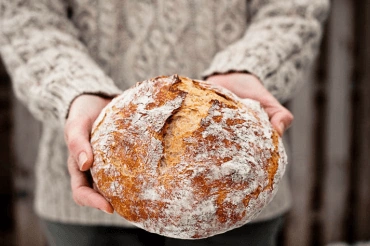1823. 'Take a three year old heifer, and a three year old she-goat, and a three year old ram' means things that are the representatives of the celestial things of the Church. This is clear from the meaning of these same animals in sacrifices. Nobody in his right mind can believe that the various animals that used to be sacrificed meant nothing but sacrifices, or that an ox and a young bull or a calf had the same meaning as a sheep, kid, and she-goat, and these the same as a lamb, and that a turtle dove and fledgling pigeons had similar meanings; for in fact each creature had its own specific meaning. This becomes quite clear from the fact that under no circumstances was one kind of animal offered instead of another, and from the fact that it was explicitly stated which creatures were to be used in the daily burnt-offerings and sacrifices, and which on the sabbath and at festivals; which creatures were to be used in free-will, votive, and communion offerings; which ones were to be used in expiations of guilt and sin; and which in purifications. This would never have been the case if some specific thing had not been represented and meant by each animal.
[2] But as to the specific meaning of each kind, this would take too long to explain here. Here it is enough if one knows that celestial things are meant by the animals and spiritual things by the birds, and that some specific celestial or spiritual thing is meant by each kind of animal or bird. The Church itself, and everything to do with the Jewish Church, was representative of such things as constitute the Lord's kingdom, where nothing but that which is celestial or spiritual exists, that is, nothing but that which belongs to love and faith, as also becomes quite clear from the meaning of clean and useful beasts, dealt with in 45, 46, 142, 143, 246, 714, 715, 776. And because in the Most Ancient Churches beasts meant celestial goods, in the Church existing at a later time when purely external, though representative, worship was highly esteemed and approved of, those beasts became representatives.
[3] Because the state of the Church is the subject here and because the nature of its state in the future is foretold, Abram was shown the same visually by means of similar representatives, exactly as recorded here. Yet quite apart from this, such things are nevertheless meant in the internal sense, as anyone may know and contemplate. For what would have been the need to take a three year old heifer, a three year old she-goat, a three year old ram, a turtle dove and a fledgling, and to divide them in two parts and to lay them out so, unless each single thing had carried a spiritual meaning? But what these details mean becomes clear from what follows below.







